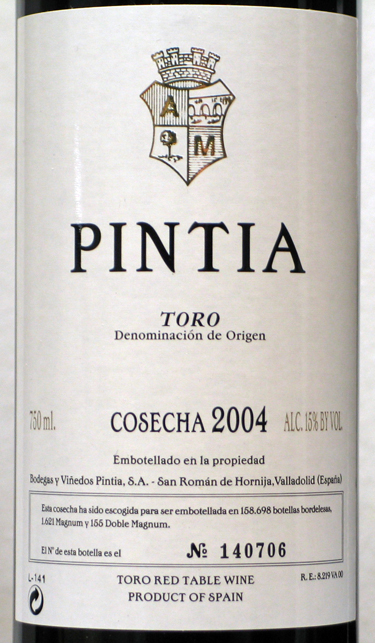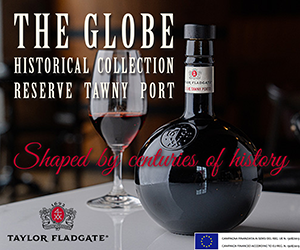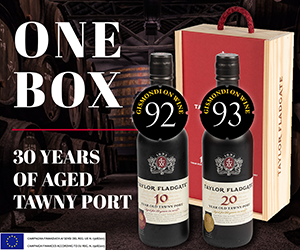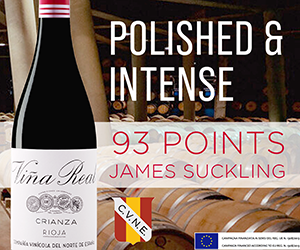As much as I enjoy a good glass of tempranillo (pronounced tempera-KNEEL yoh), I am confident 2010 will not change its global status, which is somewhere between what did you say and not very well known.

The good news is this noble Spanish variety will remain as important as ever to Iberian producers even if no one can agree on a single name to refer to the country's most famous red grape. Like many important varieties in Europe that over time are "adopted" about the countryside tempranillo, has more aliases than a con man.
In La Rioja, Navarra, Somontano and the Levante it is known by its international moniker tempranillo. But in La Mancha it's known as cencibel, south of Madrid it's referred to as valdepeñas. Ull de Llebre (eye of the hare) is its Catalonian name; it's called Tinta de Pais or Tinto Fino in Ribera del Duero, and Tinta de Toro in Toro. In nearby Portugal it is called Aragonês in Alentejo and Tinta Roriz in the Douro.
The different names could be interpreted as a marketer's nightmare but after having endured 20 years of reckless marketing destroy the personality of key grape varieties like chardonnay and shiraz, I am hopeful individuality and site-specific wine will eventually stem that tide. That is where tempranillo and its many incarnations, region-by-region, comes in.
As consumers you can use your tempranillo encounters to broaden your tasting experience. The lesson should be the possibility of enjoying flavour and mouth feel without overwhelming tannins. The grape itself is black coloured and thick-skinned. It makes full-bodied red wine, at least in the European sense.
The name comes from the Spanish word "temprano," meaning early or in this case, early ripening, always an attractive proposition for wine-makers where harvest weather is variable. It's most famous expression is in the rich, velvety red wines of La Rioja, where it is mostly blended with garnacha tinta, mazuelo and graciano and then aged in French oak Barricas (more recently) and or American oak. It is also the mainstay of Ribera del Duero reds. Globally new plantings have taken the variety to California, Australia, Argentina, South Africa and even in the Okanagan Valley. Personally we hope its future remains as it has in the past: a part of the Spanish wine mosaic that makes eating and drinking so much fun in Spain and abroad.
Here in British Columbia you will find an interesting if modest selection in government and private stores. It is a new year so why not discover a new grape. There will be plenty of time for malbec (Argentina) and sauvignon blanc (New Zealand) when the Playhouse festival rolls around in April.
We begin our discovery in Penedès with a well-known producer: Torres Coronas Tempranillo 2005. The style is soft, supple, round and fresh on the palate. It is awash in earthy, gamy, black cherry, and spicy, licorice flavours. A simple, solid red wine value once again. Barbecued pork chops anyone.
Sabor Real Tempranillo 2006 is a modest Toro-based red with a related peppery, cherry, licorice nose and flavour profile. Round and fresh it finishes clean with bits of orange peel and more licorice. A classic appetizer tapas-style red or try it with pork tenderloin, grilled lamb chops or your favourite paella recipe.
El Escondido de Don Domenico Tempranillo 2005 is the odd man out in today's pick coming from San Juan, Argentina. Look for this unusual Argentine tempranillo at Everything Wine in North Vancouver or Victoria and expect the fruit to be brighter with black cherry and plum jam notes with dried herbs, licorice and orange flecks. It finishes fresh and warm but has good fruit and smooth tannins to go with substantial meat menus.
Valdepeñas in the Castilla-La Mancha region is home to the Navarro Lopez Pergolas Old Vines Tempranillo 2006, another dry, light, elegant red wine with a dusting of tannins. Black cherry, licorice, orange, mineral, smoky, resin, tobacco flavours. Fresh, easy finish with ripe fruit for pizza, ribs or meat. Solid value.
Spicy, blackberry jam, licorice and smoky meaty notes are the calling card of the Torres Celeste 2005, a Ribera del Duero tempranillo. Typically round and ripe on the palate it has fine acidity to keep it fresh and food friendly and rich flavours reminiscent of smoky meaty tobacco/ leather with bits of chocolate and vanilla. It finishes fat with smooth tannins. A slightly rustic style suited to cold winter days and roasted meats.
There is nothing light about the Pintia Toro 2004 owned by famed Ribero del Duero producer Vega Sicilia. Pintia is 100 per cent tempranillo. It is big and brawny on entry with no shortage of warmth or alcohol. A fairly heady red with chocolate and black fruit smothered under young and somewhat obvious oak flavours. The finish mixes toasted oak and spicy black fruits all covered in a coat of tannin. Roast lamb will tame it now otherwise it needs another five to 10 years in bottle to blossom into a star.
Navarro Lopez Pergolas Old Vines Tempranillo 2006, Castilla-La Mancha, Spain
Price: $11
UPC: 784585001897
Score: 86/100
Remarks: Fresh, easy finish with ripe fruit for pizza, ribs or meat. Solid value.
Torres Coronas Tempranillo 2005, Catalunya, Spain
Price: $14
UPC: 8410113003089
Score: 85/100
Remarks: Fresh palate with earthy, black cherry fruit. Great with any food.
Sabor Real Tempranillo 2006, Toro, Castilla-Leon, Spain
Price: $17
UPC: 08437009707500
Score: 86/100
Remarks: Warm and fresh but has lots of ripe fruit to go with most meats.
El Escondido de Don Domenico Tempranillo 2005, San Juan, Argentina
Price: $25, private wine stores only
UPC: 007798109890136
Score: 88/100
Remarks: Fine fruit, smooth tannins and plenty of stuffing. Made for roasted meats.
Wine Torres Celeste 2005, Ribera del Duero, Castilla-Leon, Spain
Price: $25
UPC: 08410113003508
Score: 88/100
Remarks: A slightly rustic style for cold winter evenings with roast meat.
Pintia Toro 2004, Toro, Castilla-Leon, Spain
Price: $73
UPC: 00097985103130
Score: 93/100

 quicksearch
quicksearch





